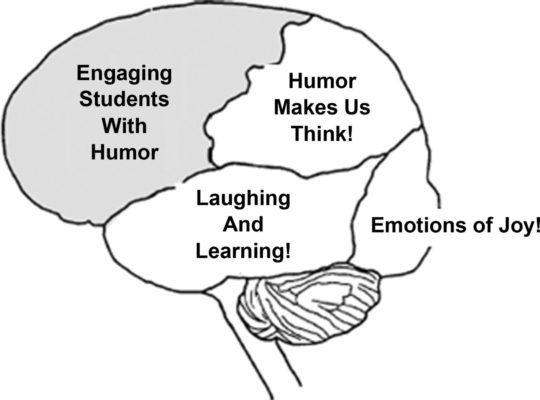A wide range of humor can be incorporated into the online course, including funny quotes, jokes, and cartoons, and in this section, we identify resources for locating pedagogical humor. When deciding which material to use for the online course, we strongly encourage instructors to consider the guidelines for pedagogical humor mentioned in the previous section. First, does the humor promote an educational objective? Second, will the students understand and appreciate the humor? Third, is the target of the humor appropriate for the course?
The Internet is the best resource for pedagogical humor, and although any search using a discipline and “humor” as descriptors will yield numerous web sites, we recommend more narrowly focused searches (i.e., “humor” and a specific discipline topic). Additional resources for pedagogical humor include supplemental instructional materials provided by book publishers and journals devoted to humorous research (e.g., Journal of Polymorphous Perversity, Annals of Improbable Research). When using humor from other sources, instructors need to adhere to copyright considerations.
Visual humor is especially effective in online courses, and cartoons, illustrations, and photographs, can easily be integrated throughout the course. Although visual humor is usually self-contained (i.e., a caption or the illustration delivers the punch line), there are several ways that instructors can enhance visual humor for the online environment. Visuals, such as photographs or illustrations, can be used as a punch line for a joke. For example, when discussing the difficulty of course examinations, the setup would be “And this is how students often feel after an exam…” with a photograph or cartoon of frighten individuals delivering the punch line. For this type of humor to be effective, the visual punch line needs to be hidden behind a hyperlink.
For the more adventurous instructor, photographs can also be easily “doctored” with editing software to produce a humorous result. For example, the first author posts a family portrait in which his beard is “cloned” onto each family member. Digital videotape cameras can also be used to produce brief instructional vignettes. We strongly believe that integrating personal photographs or “home movies” into online instruction adds a more personalized and intimate feel to the often sterile nature of online courses.
Given the abundance of pedagogical humour resources, instructors can use students to help identify and screen potential material. We use an extra-credit activity called the “Contributing Editor” that requires students to locate potential sources of humour on any course topic. Besides submitting a copy of the resource, students are required to submit a written report that identifies the source, the topic that is addressed, and a brief description of how the material relates to the course. We also set up discussion boards (e.g., “The After Hours Club,” “The Psychology Comedy Club”) to allow students the opportunity to post jokes, humorous observations concerning course topics, or links to humorous web sites. If students are used to assist with locating material, then we strongly encourage instructors to identify specific guidelines, such as the criteria described in the beginning of this section, to help students understand what types of humour are appropriate for the course.
Source: https://radicalpedagogy.icaap.org/content/issue8_2/shatz.html






